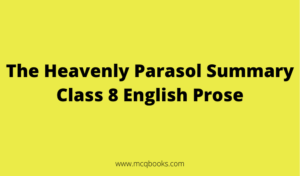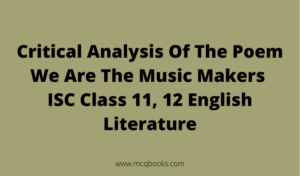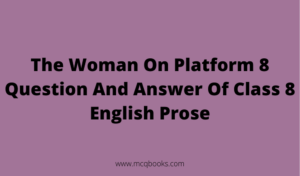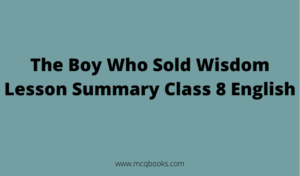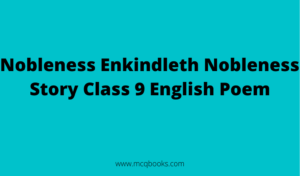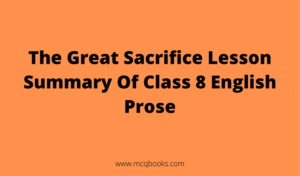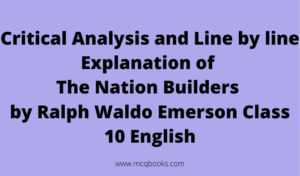The Fox And The Grapes Extra Questions And Answers Karnataka Board Class 9 English Poem
English is a difficult subject for many people to learn. Some students may become frustrated and give up, but here’s The Fox And The Grapes Extra Questions And Answers Karnataka Board Class 9 English Poem to help you maintain your momentum! This The Fox And The Grapes Extra Questions And Answers will provide all necessary information needed in order to study KSEEB Class 9 English successfully at home or school; it includes detailed grammar rules with examples that were used during today’s class discussion on the Karnataka Board English Exam.
The The Fox And The Grapes Extra Questions And Answers in English, Chapter 2, Karnataka Board Class 9 makes it easier to understand the story. Understanding every detail of a story is important for scoring higher on an exam and expert writers have made sure that you know how everything flows together by summarizing perfectly!

Additional questions:
What did the fox spot?
A) A bunch of grapes
B) Some mangoes
C) Exotic flowers
D) Some apples
Choose the correct option.
Ans: A) A bunch of grapes.
Where is the poem primarily taken from?
Ans: The poem has been mainly based on Aesop’s Fables.
About the poem:
This poem is based on one of Aesop’s fables. The story revolves around a fox that is trying to eat grapes from a vine, but it is unable to reach them.
Structure of the poem:
“One summer’s day a Fox was passing through
An orchard; faint he was and hungry, too.
When suddenly his keen eye chanced to fall
Upon a bunch of grapes above the wall.
‘Ha! Just the thing!’ he said ‘who could resist it?
He eyed the purple cluster -jumped- and missed it.
‘Ahem!’ he coughed. I’ll take more careful aim’
And sprang again. Results were much the same,
Although his leaps were desperate and high.
At length he paused to wipe a tearful eye,
And shrug a shoulder. ‘I am not so dry,
And lunch is bound to come within the hour…
Besides,’ he said ‘ I’m sure those grapes are sour.’
The moral is : we somehow want the peach
That always dangles just beyond our reach;
Until we learn never to be upset
With what we find too difficult to get.”
There is a specific rhyming pattern. It is AABBCC DDEEEFF GGHH.
Line by line analysis of the poem:
Stanza 1:
“One summer’s day a Fox was passing through
An orchard; faint he was and hungry, too.
When suddenly his keen eye chanced to fall
Upon a bunch of grapes above the wall.
‘Ha! Just the thing!’ he said ‘who could resist it?
He eyed the purple cluster -jumped- and missed it.”
In the first stanza, the poet talks about a fox. It is a hot summer’s day and the fox was passing a fruit garden. He was very tired and hungry then. He noticed a bunch of grapes above the wall. And he thought it was impossible to resist those grapes. He tried getting the bunch by jumping over the wall. Sadly, he missed the bunch.
Stanza 2:
“‘Ahem!’ he coughed. I’ll take more careful aim’
And sprang again. Results were much the same,
Although his leaps were desperate and high.
At length he paused to wipe a tearful eye,
And shrug a shoulder. ‘I am not so dry,
And lunch is bound to come within the hour…
Besides,’ he said ‘ I’m sure those grapes are sour.’”
After missing the bunch for the first time, the fox decided to be more careful and take a better aim. He jumped again. The same thing happened again. He made many attempts. The results were same each time. He was very desperate and tried again and again, but failed. After so many failed attempts, he shrugged his shoulder and thought that he would anyway get lunch in an hour. Also, he said to himself that the grapes must be very sour.
Stanza 3:
“The moral is : we somehow want the peach
That always dangles just beyond our reach;
Until we learn never to be upset
With what we find too difficult to get.”
The last stanza of the poem talks about the moral of the whole story. It says that we always want things beyond our reach. Until we realise the same and know how to net be upset with what we find difficult to get.
Alliteration: This is a figure of speech where closely associated words or corresponding words begin with the same alphabet in a sentence.
“With what we find too difficult to get.”
Personification: Personification is a figure of speech in which animals, or other inanimate objects are credited with human feelings, emotions and abilities.
“And shrug a shoulder. ‘I am not so dry,
And lunch is bound to come within the hour…
Besides,’ he said ‘ I’m sure those grapes are sour.’”
Important word meanings:
Fable: A short moral story.
Resist: Withstand.
Leap: Jump.
Shrug: Slightly shake the shoulder.
Dangle: Loosely suspended.
Theme of the poem:
The poem revolves around the moral- It says that we always want things beyond our reach. Until we realize the same and know how to net be upset with what we find difficult to get.
